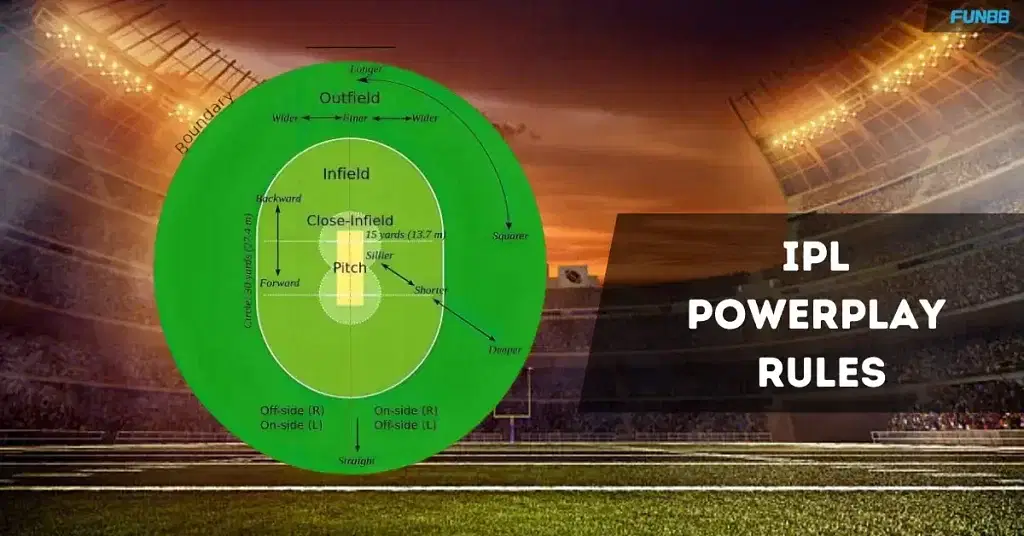Every cricket fan knows that the Indian Premier League (IPL) is not just about big hits and thrilling finishes; it’s also a league where cricket peaks. Like any other major tournament, it includes all strategies and tactics. One of the most critical phases in a match is the powerplay, which occurs during the first six overs of each innings. It adds an extra thrill to the game.
Fans can enhance their watching experience by understanding the Indian Premier League powerplay rules. It helps explain why specific teams may start aggressively or, conversely, choose a more conservative beginning depending on their overall strategy and the game conditions.
What is Powerplay in Cricket?
Powerplay refers to rules in limited-overs cricket designed to encourage more aggressive and exciting play. It significantly affects fielding restrictions, influencing how batters and bowlers approach the game.
In One Day Internationals (ODIs) and Twenty20 Internationals (T20Is), including the IPL, powerplays have a major impact on match strategies. Since the IPL is a T20 format league, it follows all the fundamental rules of the International T20 format. For T20 games, the powerplay encompasses the first six overs of each innings.
During this period, only two fielders are allowed outside the 30-yard circle. This rule allows batters to score quickly by taking advantage of the field restrictions.
In ODIs, powerplays are divided slightly differently. They usually include an initial set of overs similar to T20s, followed by additional powerplay overs later in the innings, where the fielding restrictions may differ slightly in terms of the number of fielders allowed outside the circle.
The strategic significance of power plays lies in the balance they strike between risk and reward. Batters are encouraged to play more aggressively, knowing fewer fielders are in the deep to prevent boundaries.
Successfully navigating the powerplay can set a strong foundation for a team’s innings by increasing run rates and exerting pressure on the fielding side. Conversely, bowlers and captains must strategically plan their field settings and bowling changes to minimise damage during these overs.
Thus, powerplays transform cricket from purely tactical into an exciting spectacle, challenging teams to innovate and adapt their strategies to gain an advantage. Understanding powerplays can enrich fans’ appreciation of cricket’s complex interplay of strategy and skill, providing deeper insights into how each team approaches these crucial match phases.
Also Read: Which IPL Team Has Most Fan Following?
Powerplay Rules in IPL 2024
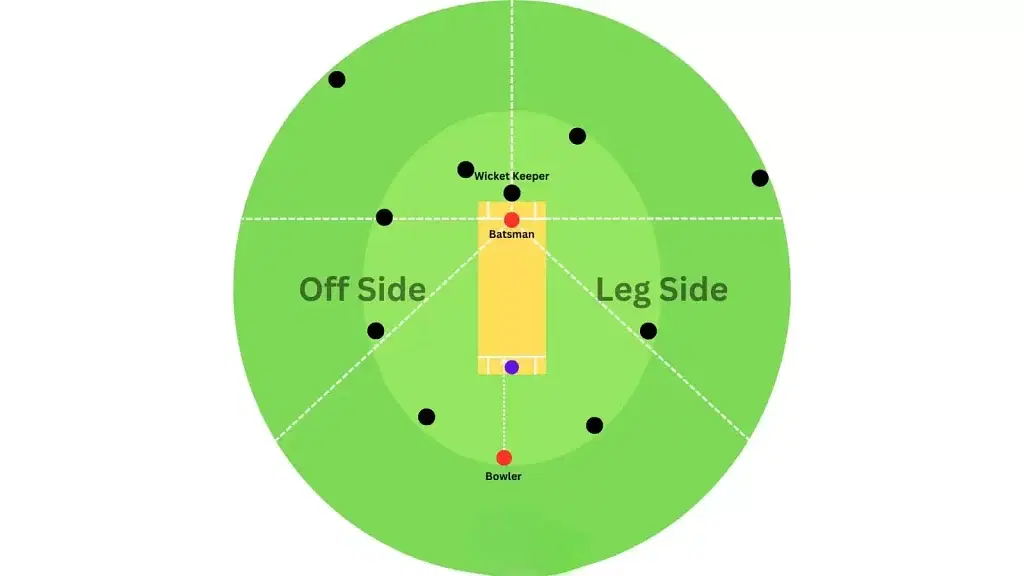
Number of Overs in Powerplay
In the Indian Premier League (IPL) 2024, the powerplay consists of the first six overs of each innings. These initial overs are critical as they set the tone for the batting side’s approach to the game. During the powerplay, specific fielding restrictions are applied to create opportunities for higher scoring, putting pressure on the bowling team to balance aggression with discipline.
Fielding Restrictions During Powerplay
Only two fielders are permitted outside the 30-yard circle during the powerplay overs. This restriction aims to incentivise the batting team to play aggressive shots with the field narrowed in, creating more opportunities to score boundaries. The fewer fielders are guarding the boundary, the higher the likelihood of finding gaps. It leads to a potentially higher run rate in these opening overs.
After the first six overs, fielding restrictions ease slightly; a maximum of five fielders can be placed outside the 30-yard circle for the remainder of the innings. This shift allows the bowling side to adopt a more defensive strategy, potentially curbing the batting side’s momentum gained during the powerplay.
How Powerplay Impacts IPL Matches
The powerplay is a crucial component of IPL matches, significantly influencing team tactics and the overall flow of the game. Only two fielders are allowed outside the 30-yard circle during the first six overs. This rule will enable batters to score rapidly, aiming for boundaries with fewer fielders patrolling the outfield. Teams often use this phase to establish a strong foundation, setting a brisk pace for the innings.
For the batting side, the powerplay’s primary impact is the potential boost to their scoring rate. Teams with aggressive openers often exploit these restrictions to their advantage, attempting to maximise the score early on. Successful utilisation of this phase can place immense pressure on the opposing team, forcing them to rethink their strategy for the remaining overs.
The powerplay presents a challenge for bowlers and captains. Effective bowling during this period can dampen the opposition’s momentum. Bowlers aim for precision and movement to induce false shots and capitalise on aggressive batting attempts to take early wickets.
Captains must be strategic with their field placements and bowling changes to minimise damage and keep control despite the field restrictions.
A high score during these overs can provide an irreversible advantage. At the same time, a strong bowling performance can undermine the batting team’s efforts, highlighting this format’s tactical intricacy and excitement.
Also Read: Who is the Baap of IPL?
Strategies Used by Teams During Powerplay
During the powerplay, teams employ various strategies to maximise their advantage, whether batting or bowling. For the batting side, the emphasis is on aggression and calculated risks. Teams often send out their most explosive batters, aiming to utilise the reduced fielding restrictions to score boundaries.
Batters focus on attacking shots to clear the infield and find gaps. Partnerships are key, with batters communicating to maintain a steady, aggressive run rate without losing too many wickets.
On the bowling side, teams strive to maintain control and curb the scoring rate. Fast bowlers are often deployed initially due to their ability to extract pace and bounce, potentially unsettling batters.
Line and length are crucial, with bowlers concentrating on yorkers and in-swinging deliveries to limit hitting opportunities. Captains might also employ spin early if the pitch conditions are favourable, trying to induce error through variation in pace and flight.
Fielding strategies are adjusted, with captains placing agile fielders in key positions to cut off quick singles and stop powerful shots before they reach the boundary. Bowlers and captains constantly communicate to adapt their plans, aiming to take early wickets and disrupt the batters’s rhythm.
These offensive and defensive strategies during the powerplay highlight the required depth of planning and adaptability, emphasising their critical role in shaping match outcomes in the IPL.
Powerplay Records in IPL History (Top Performances)
The powerplay period in the Indian Premier League (IPL) is designed to create fireworks, providing batters with opportunities to score heavily while presenting bowlers with the challenge of early breakthroughs. Over the years, some teams and players have made the most of these crucial six overs, setting records highlighting explosive batting and strategic prowess. Here’s a closer look at some standout performances during IPL powerplays.
Highest Powerplay Score
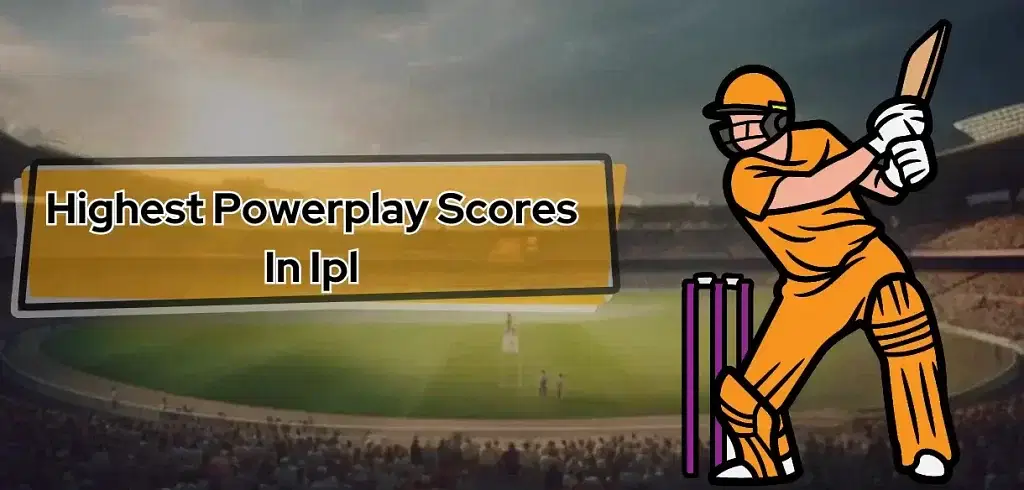
One of the most remarkable records of highest powerplay score in IPL was set by Sunrisers Hyderabad (SRH) with a stunning score of 125/0 against Delhi Capitals in IPL 2024. This breathtaking performance was anchored by Travis Head and Abhishek Sharma, who showcased their batting prowess by capitalising on the fielding restrictions and putting SRH in a commanding position right from the start. Their partnership exemplified the potential of powerplays to shift a match’s momentum dramatically.
Most Wickets in Powerplay
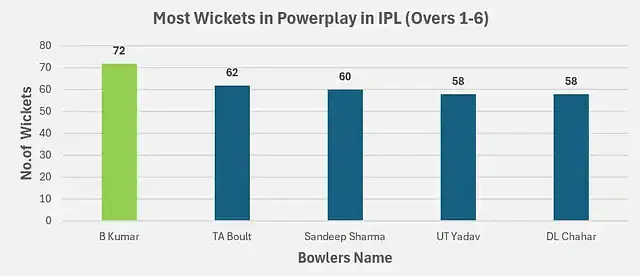
Bowling during powerplay requires skill and precision, and some bowlers have excelled in this challenging phase to put their teams in an advantageous position. Bhuvneshwar Kumar holds the record for the most wickets taken in the powerplay, with 71 dismissals. Known for his swinging deliveries and pinpoint accuracy, Bhuvneshwar has often provided crucial breakthroughs for his team.
Following him is Trent Boult, who has scalped 62 wickets with his left-arm pace and swing. Sandeep Sharma, with 59 wickets, and Deepak Chahar, with 58, have also been crucial bowlers in the powerplay, consistently troubling top-order batters and restricting runs.
Other Top Powerplay Scores
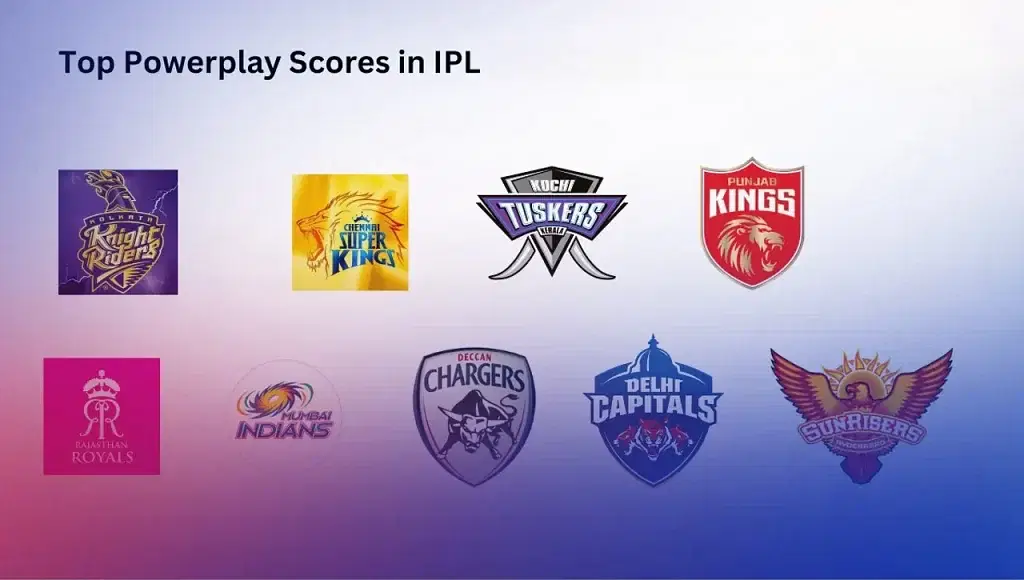
Besides Sunrisers Hyderabad’s record-breaking performance, there have been several other noteworthy top powerplay scores in IPL history:
● Kolkata Knight Riders (KKR): Scored 105/0 against Royal Challengers Bangalore (RCB) in IPL 2017. This impressive display featured aggressive batting and quick scoring, setting a solid foundation for KKR’s innings.
● Chennai Super Kings (CSK): Achieved 100/2 against Punjab Kings (PBKS) in IPL 2014, demonstrating their ability to score rapidly despite losing a couple of wickets. This score highlighted CSK’s strategic approach to maximising scoring opportunities.
● Chennai Super Kings (CSK): Posted 90/0 against Mumbai Indians (MI) in IPL 2015, showcasing flawless execution and control as they took full advantage of the six-over powerplay restriction.
These performances underscore the significance of the powerplay phase in determining the course of T20 matches. Teams that maximise their scoring during these overs often set their innings up for success, while those that excel in bowling can significantly restrict the opposition’s scoring rate.
Powerplay Records Table
| Record | Details |
| Highest Powerplay Score | Sunrisers Hyderabad: 125/0 vs. Delhi Capitals (2024) |
| Most Wickets in Powerplay | Bhuvneshwar Kumar: 71, Trent Boult: 62, Sandeep Sharma: 59, Deepak Chahar: 58 |
| KKR Highest Powerplay Score | 105/0 vs. RCB (2017) |
| CSK Highest Powerplay Score | 100/2 vs. PBKS (2014) |
| CSK Outstanding Powerplay | 90/0 vs. MI (2015) |
Powerplay Rule Differences Between IPL and Other Leagues
The powerplay rule in the Indian Premier League (IPL) is the same as in most other domestic and international T20 cricket leagues:
● The first six overs of an innings are the powerplay overs.
● During the powerplay, only two fielders are allowed outside the 30-yard circle.
● After the powerplay, no more than five fielders are allowed outside the 30-yard circle.
However, the England’s Hundred Ball League has a different powerplay rule:
● The powerplay in the league is applicable only for the first 25 deliveries.
● After the powerplay, the batters can choose a two-over period in the second half of the innings called a Powersurge, during which the same restrictions apply.
Also Read: How to Swing a Cricket Ball Like a Pro: Step-by-Step Guide
Conclusion: The Importance of Powerplay in IPL Success
Powerplay plays a crucial role in shaping the direction and pace of the game. Especially in shorter formats like T20, including IPL, it can help batters take their teams in a very strong position. At the same time, bowlers can use this as an opportunity to trap the batters as they take more risks during the powerplay. It can help them restrict aggressive scoring and shift the batting side’s strategy. By mastering the IPL powerplay rules, teams can form strategies to outplay their opponents.
Frequently Asked Questions (FAQs)
In IPL 2024, the powerplay rules stipulate that the first six overs of each inning allow only two fielders outside the 30-yard circle. This restriction encourages aggressive play from batters, who aim to capitalise on the fewer fielders in the outfield. Post-powerplay, teams can place up to five fielders outside the circle, offering more defensive options as the game progresses, balancing aggression with caution.
The IPL features a powerplay comprising the first six overs of each innings. This period is characterised by specific fielding restrictions that limit the number of fielders outside the 30-yard circle to just two. These restrictions enhance scoring opportunities and encourage dynamic, attacking play from the batting team right from the start, significantly influencing the match’s early dynamics.
The powerplay profoundly impacts IPL matches by dictating initial strategies for both batting and bowling sides. Batters aim to score rapidly, utilising fielding restrictions to amass quick runs. Effective exploitation of this period can give a team a commanding start, setting a high tempo for the innings. Bowlers focus on taking early wickets to curb the momentum, making the powerplay a decisive factor in match outcomes.
Star it if you find it helpful.
